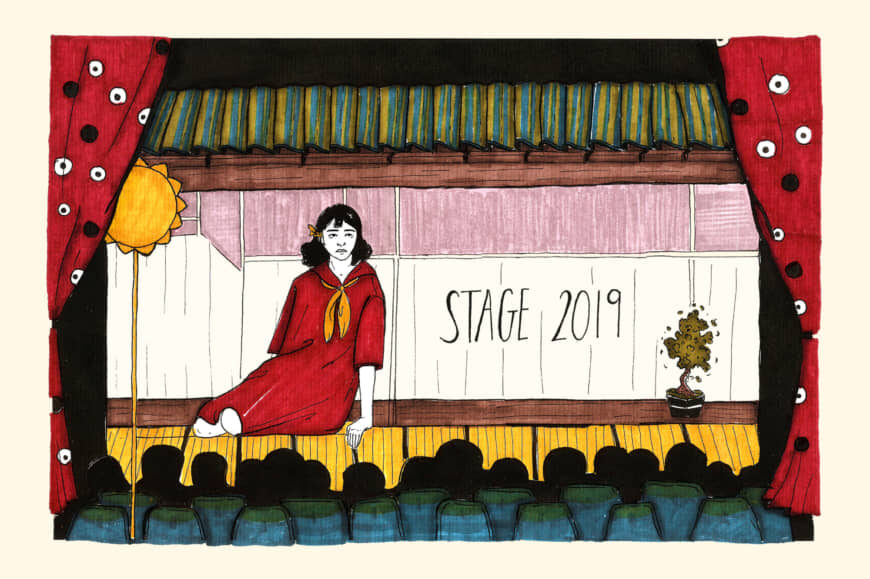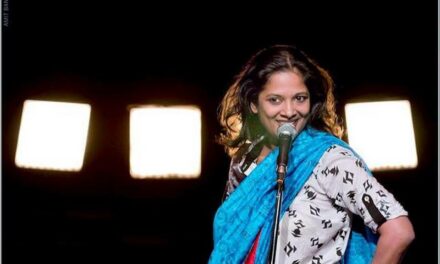As the curtain falls on 2019’s theater scene in Japan, a continuing rise in the popularity of musicals now sees them clearly positioned at the center of the country’s entertainment mainstream.
With theater long having been more of a personal pursuit here than the public forum for ideas it is in many Western cultures, since producers realized there was an appetite for musicals, and shows with music, they have steadily been responding to that demand.
So, after a Broadway or West End musical has played here with its original cast, it has now become routine for Japanese companies to present a follow-up version of the same production using Japanese actors.
For example, in 2019 a new version of West Side Story by the American director David Saint, featuring an American cast, had its world premiere at IHI Stage Around Theatre Tokyo. There, where the stage encircles an audience seating area that can rotate a full 360 degrees, the show ran for two months in autumn and was followed soon after by a Japanese version that will continue until spring with three different cast teams.
In addition, Japan’s unique and original take on the genre, so-called 2.5-dimensional musicals based on manga, anime or computer games, has steadily built up a fan base of loyal repeat attendees over the course of the year.
Featuring good-looking young men and women costumed and made-up exactly like characters from those pages or screens, these shows — including Touken Ranbu, Naruto and Pretty Guardian Sailor Moon — typically combine original music with glamour and excitement in narratives built around sword fights, sports contests, and romance.
Although many young people in Japan’s stagnating economy find their leisure spending ability being squeezed, these 2.5-dimensional musicals are a boon for the entertainment business because most people already know their storylines from the comics and games, so the predominantly female audience’s main purpose is often simply to see actors they idolize. As a result, just as with kabuki, many return again and again to gush over their favorite performers.
Among those, and despite his unrelenting workload, one of musical drama’s leading actors, Kazuki Kato, was still able to brilliantly display his talent in Backbeat, a semi-biographical musical about The Beatles. In this show, which was among the year’s highlights, Kato’s portrayal of John Lennon in his early days took audiences on a magical mystery tour as he channeled the charismatic star, played guitar and sang the group’s songs in English.
Meanwhile from among 2019’s list of plays that prominently featured music, two, in particular, stood out.
The first was a production of German playwright Bertolt Brecht’s 1928 capitalism and political corruption satire, The Threepenny Opera, staged just three times by the Kodomo Kyojin troupe in the modified dining-kitchen area of Kyoto University’s old Yoshida Dormitory.
This marvelous theater experience was planned in part as a protest against an order to vacate the historic dormitory ahead of its demolition — an aim it appears to have thwarted so far since the building is still occupied and the dispute with university officials continues.
To pull off the show, the company invited local people to join the cast, and they energized the play by performing its songs with live band music, spirited singing, and spontaneous improvisation. Altogether, Kodomo Kyojin created a special festive event of top theatrical quality that, besides fostering happy feelings of solidarity, was a rare and valuable experience its audiences will long remember.
Another new play, Sekai wa Hitori (which translates as “The World is Alone”) by playwright and director Hideto Iwai, followed seemingly unremarkable twists and turns in the lives of three elementary school classmates. However, besides the quality of its script and staging, and the excellent acting from Suzuki Matsuo, Takako Matsu, and Eita Nagayama — better known as simply Eita — in the main roles, Kenta Maeno and his band’s powerful and disturbing live, onstage rock music really set this play apart in the way it so emotively complemented the human drama.
Despite these high points, though, the year didn’t really see any outstanding newcomers bursting onto the scene. Instead, three globe-trotting dramatists in their 40s — Toshiki Okada from Chelfitsch, Kuro Tanino from Niwa Gekidan Penino and Motoi Miura from Chiten — have kept the flag of theatrical vitality flying high.
Just as Iwai triumphed in collaboration with Maeno, Okada’s Pratthana — A Portrait of Possession based on Thai novelist Uthis Haemamool’s book of the same name, left Tokyo audiences agape and sent a stir through theater circles with its portrayals of the author’s turbulent life as a bisexual artist amid modern Thailand’s unsettled political situation — and that despite it being a four-hour play performed by Thai actors in the Thai language with Japanese and English subtitles.
The reaction came in part because this radical production also saw technical staff, such as the stage designer and sound technician, stay in the acting area along with the actors throughout, fragmentarily narrating the hero’s memory as if from a different dimension, and expressing both his impulsive sex life and the conflicts in Thailand’s strict society through violent physical movement. Sometimes these scenes were filmed live on stage and projected as flashing images that again created a sense of added dimension.
Besides constantly touring overseas, Okada is also a regular guest creator at the prestigious Kammerspiele theater in Munich.
Commenting on the thinking behind this production, he says, “I want to make theater about localized things that are actually happening now, but which we hardly realize or just pass on by in our busy lives.”
Clearly, Pratthana served as a way to explore how theater might influence audiences’ lives through this kind of artistic globalization, enabling them to identify with other nations’ issues as their own.
In contrast, rather than adopting Okada’s post-dramatic approach to theater, Tanino successfully created a universal human drama.
In this year’s reprise of his 2006 work Egao no Toride (“Fortress of Smiles”), the playwright and director again presented his gripping narrative drama in a highly realistic stage set divided into two parts by a wall separating two families’ cozy apartments in a rural fishing village.
While a middle-aged fisherman spends his time at home drinking and having fun with younger co-workers, adjacent to his room the audience sees an elderly woman with dementia whose son and granddaughter often stop by to look after her. And though the very different people on each side of that divide simply want to lead quiet, peaceful lives, a reality of bitter sorrow awaits them. So, as Tanino’s stunned audiences realized, despite it playing out in such a small domestic context this drama had a universality that would translate to any language.
In addition, Miura, the director and founder of the avant-garde Chiten theater company, was another dramatist plowing new furrows in 2019.
Following several successful years presenting his cheap-ticket experimental works at his cozy Under-Throw studio in Kyoto, in 2019 he moved to the prestigious Kanagawa Arts Theatre in Yokohama. There, he presented his new play, To Siberia! Siberia! Siberia!, based on Anton Chekhov’s short novels and other writings about his journey to Russia’s former prison island of Sakhalin.
On Itaru Sugiyama’s brilliant stage set, a huge dead, leafless tree, hanging from the ceiling, and a smoky mirrored backdrop created a powerful sense of the frozen region’s vast harshness. Then actors would gallop in file, yelling together, “basha, basha, basha” (which means “horse carriage” in Japanese and also sounds like one as well), or they’d smash themselves into iron bars as another way of expressing with their whole bodies the extremes Chekhov faced in those remote lands.
At the same time, the same theater also presented Miura’s acclaimed avant-garde, provocative and high-tension version of Chekhov’s Three Sisters on different days in the same season — an initiative that gave audiences a rare opportunity to truly connect with his and Chiten’s unique approach to theater.
Finally, as 2019 draws to a close, and with many musicals enlivening the theater scene, Kirei (which translates as “Beautiful”) — an iconic tour through recent made-in-Japan music by the multitalented Suzuki Matsuo’s Otona Keikaku company — is filling the prime year-end program at Theatre Cocoon in Tokyo’s Shibuya Ward.
When Kirei (which glories in the subtitle, A Woman’s Rendezvous with God) premiered in 2000, as Western musicals were at their height, this work with an original story and songs and a cast of young stage actors inspired countless young people to become theater lovers.
Indeed, due to its great reputation, this is the fourth run of Kirei. However, back in 2000, many business types were apparently opposed to letting a rising newcomer like Matsuo stage what they thought had little appeal: an original, all-Japanese musical.
Now, though, it’s plain to see the wisdom of the show’s producers. So, it’s to be hoped that such creators and risk-takers will continue to enrich Japanese theater in the coming year, too.
This article was originally posted at japantimes.co.jp on December 20th, 2019 and has been reposted with permission. To read the original article, click here.
This post was written by the author in their personal capacity.The opinions expressed in this article are the author’s own and do not reflect the view of The Theatre Times, their staff or collaborators.
This post was written by Nobuko Tanaka.
The views expressed here belong to the author and do not necessarily reflect our views and opinions.


















